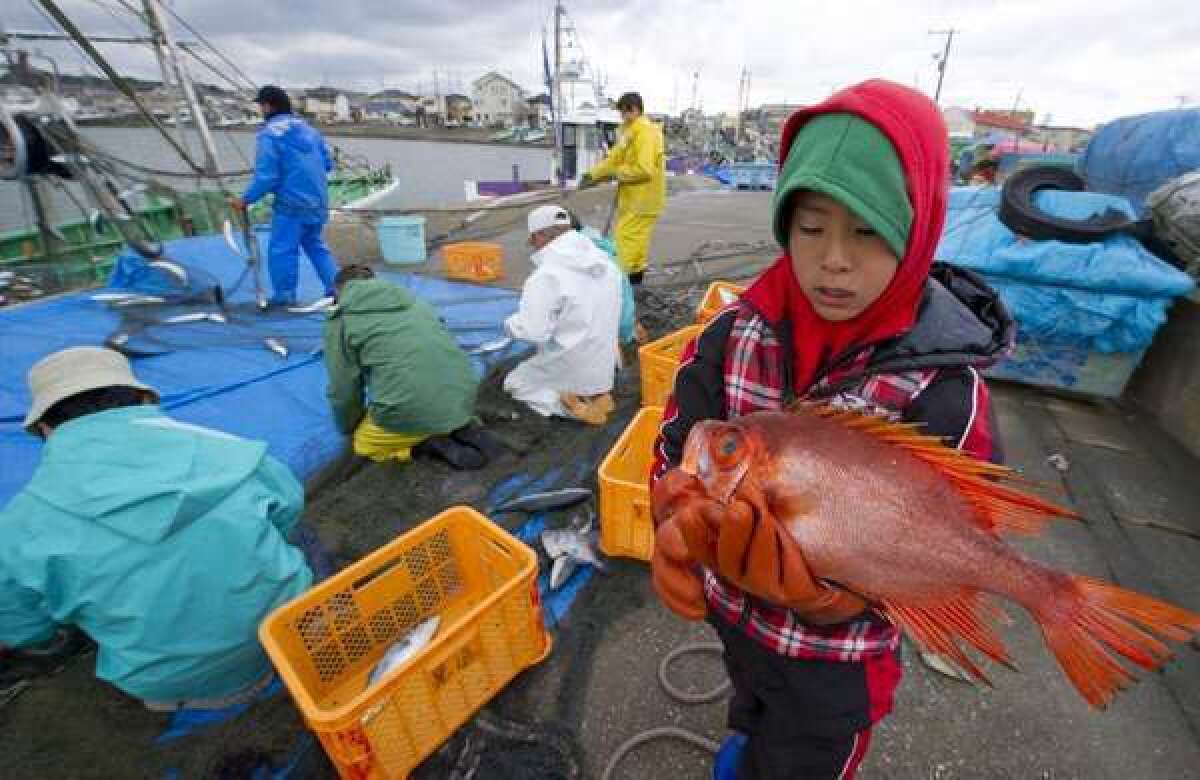On Japanese tsunami anniversary, recalling Fukushima effects on ocean

- Share via
It’s been exactly two years since Japan’s devastating earthquake and tsunami. The magnitude 9.0 shaker resulted when a portion of the Pacific plate was pushed into and underneath the North American plate, shifting the position of Earth’s axis about 6.5 inches and speeding its rotation by about 1.8 microseconds a day. Memorably, the temblor also set off a gigantic tsunami that leveled homes and disabled the Fukushima Daiichi nuclear plant, leaving rescue crews to scramble to contain the damage. Radioactive water from precipitation, from rivers and from the facility itself poured into the Pacific.
While the situation has stabilized to a large degree — a recent report from the World Health Organization indicated that lifetime cancer risks for people in the area were increased only slightly, at “below detectable levels” — there are still lingering questions about the disaster, including worries about radiation in the ocean.
On Monday, a group of scientists and activists gathered at the New York Academy of Medicine to discuss the ecological and medical effects of the disaster. One of the speakers was Woods Hole Oceanographic Institution researcher Ken Buesseler, a radiochemist who has been monitoring the radiation in the ocean near Fukushima consistently since the disaster.
Last year, in a June interview with the Los Angeles Times, Buesseler said that the reactor appeared to still be leaking — at levels where it would be safe for people to swim in the water, but where seafood caught off the coast would be impacted. In an article published in October in the journal Science, Buesseler reported that radiation was still being introduced into the ocean (subscription required.) Levels of radiation in fish were below strict limits for consumption, and in many cases had not fallen below levels from a year before.
On Monday, Buesseler told the New York gathering that there hadn’t been “dramatic changes” in the months since.
Cesium levels in the ocean, still elevated, weren’t decreasing as quickly as had been hoped -- suggesting that radiation was still being introduced into the Pacific, perhaps through leaks from the plant and from river and groundwater discharge from land, perhaps from the sea floor itself. Bottom-dwelling and freshwater fish still had elevated levels of contamination, too.
“Fukushima was an unprecedented event for the oceans,” he told the meeting.
The “Medical and Ecological Consequences of the Fukushima Nuclear Accident” conference will continue Tuesday and is viewable by webcast here.
For more information about Ken Buesseler’s work at Fukushima and elsewhere, see his website at the Woods Hole Oceanographic Institution. On May 9, Woods Hole will host a public meeting to discuss developments further.
Follow me on Twitter: @LATerynbrown







